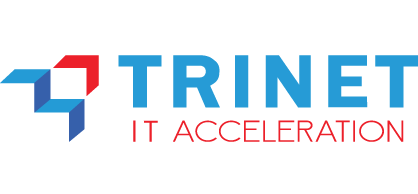Solutions > Software as a Service (SaaS)

Software as a Service (SaaS)
Business Challenges
In today’s fast-evolving technological landscape, Software as a Service (SaaS) has become an essential solution for organizations to streamline operations, enhance scalability, and optimize resource usage. With cloud-hosted applications, businesses no longer need to manage the infrastructure or perform maintenance tasks themselves. SaaS enables seamless integration with various cloud services, offering cost-effective and reliable software delivery. However, organizations face the following risks without the right protection:
1. Operational and Security Vulnerabilities
- Unprotected data can be exposed to threats, including cyber-attacks and data breaches.
- Lack of encryption and secure protocols for data storage and transmission increases vulnerability.
- Failure to implement multi-factor authentication (MFA) or strong access control mechanisms can lead to unauthorized access.
2. Compliance Challenges
- Without proper tools, organizations may fail to comply with evolving regulations, leading to financial and legal penalties.
- Manual compliance processes increase the risk of errors and delays in reporting.
- Failure to implement automated auditing and compliance reporting mechanisms can lead to challenges in demonstrating adherence to regulations.
3. Data Loss Risks
- Poor management of SaaS platforms may result in data loss, with limited recovery options.
- Without effective backup strategies and disaster recovery plans, critical data could be permanently lost in the event of a service outage or failure.
- Inadequate access control and authentication mechanisms increase the risk of unauthorized data access and accidental deletion.
4. Vendor Dependency
- Organizations may become overly reliant on a single SaaS provider, increasing the risk of service disruptions or vendor lock-in.
- Dependence on a single provider for critical infrastructure services can result in lack of flexibility and increased vulnerability if that provider experiences outages or security breaches.
- Vendor lock-in could lead to higher long-term costs and limitations when switching or integrating with other platforms.
5. Lack of Visibility and Control
- Without proper monitoring, businesses may struggle to track user activity, data access, and overall platform performance, leading to undetected security incidents.
- Lack of visibility into cloud service performance and user behavior increases the chances of unnoticed vulnerabilities.
- Inadequate monitoring of SaaS platforms can lead to slow responses to incidents, allowing threats to escalate.
Software as a Service (SaaS) is a cloud-based service where applications are hosted and managed by a provider, offering businesses the ability to access software over the internet. Key features of SaaS solutions include:
- Scalable Cloud Solutions → SaaS applications scale effortlessly with your organization’s needs, enabling seamless expansion without on-premise hardware.
- Automatic Software Updates → SaaS providers manage all software updates, patches, and security upgrades, ensuring your organization is always up-to-date.
- Reduced IT Costs → With SaaS, there is no need for substantial upfront capital expenditure, as the service is typically provided on a subscription model.
- Secure and Compliant → SaaS providers implement robust security measures, including encryption, data backup, and compliance with industry standards such as GDPR, HIPAA, and PCI DSS.
Key Features of SaaS solutions include:
- Accessibility → SaaS applications can be accessed from any device with an internet connection, allowing for greater flexibility and remote work capabilities.
- Multi-Tenant Architecture → SaaS platforms serve multiple customers, allowing for shared infrastructure while ensuring data isolation and privacy.
- Security Features → Industry-standard security protocols, such as encryption and multi-factor authentication (MFA), protect user data and ensure privacy.
- Integration Capabilities → Seamlessly integrates with other software solutions, including both cloud-based and on-premise systems, providing a connected and unified workflow.
SaaS offers several benefits for businesses:
- Cost-Effective → SaaS eliminates the need for significant upfront investments in hardware and reduces operational costs associated with software maintenance and updates.
- Flexibility & Scalability → As your business grows, SaaS applications scale up effortlessly to accommodate more users and increased workloads.
- Faster Time to Market → With pre-built software, businesses can quickly implement and deploy applications without the long lead time typically required for on-premise software solutions.
- Enhanced Collaboration → SaaS enables teams to collaborate in real-time, sharing information and resources across various locations, which enhances productivity.
SaaS solutions are beneficial for various industries, including:
- Healthcare → Secure patient data management and compliance with HIPAA regulations, enabling healthcare providers to improve patient care and operational efficiency.
- Financial Services → Data security, regulatory compliance, and risk management are critical in the financial sector, and SaaS provides robust solutions for these challenges.
- Retail & E-Commerce → SaaS enables retailers to manage inventory, customer data, and order processing efficiently while offering a seamless customer experience.
- Government → Cloud-based SaaS applications support government agencies in enhancing service delivery, ensuring compliance, and maintaining the security of sensitive public data.
PT Trinet Prima Solusi offers expertise to help businesses make the most of SaaS with:
- SaaS Integration & Consulting → Assisting businesses with selecting, integrating, and optimizing SaaS solutions to meet specific operational needs.
- Cloud Migration Services → Helping organizations smoothly transition to the cloud, ensuring minimal disruption during the migration process.
- Managed Services → Providing ongoing support and management to ensure SaaS applications perform optimally while mitigating security risks.
- Compliance & Security Assurance → Ensuring that SaaS solutions meet industry standards for security, privacy, and compliance, protecting both data and business interests.
Contact our experts for further information













